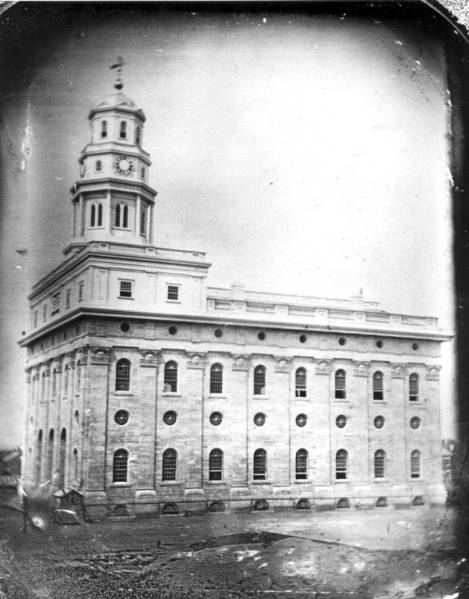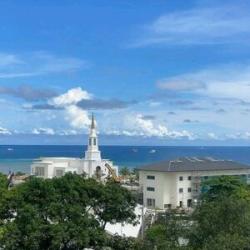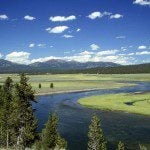
***
A new article by Richard O. Cowan appeared today in Interpreter: A Journal of Latter-day Saint Faith and Scholarship:
“Latter-day Houses of the Lord: Developments in Their Design and Function”
Abstract: This essay traces the modern-day usage and understanding of temples from the Kirtland Temple to Nauvoo and the Salt Lake Temple. Architecture was used to teach principles. While the Kirtland Temple was preparatory (think of the vision of Christ and the conference of keys by Abraham, Moses, Abraham, Elias, and finally Elijah), the Nauvoo Temple was dedicated to ritual usage. In 1879, the Church reduced temple usage to rituals, and thus assembly rooms are missing from later temples. Through his paper, Cowan shows how temples have changed according to revelation and how prophets have seen models in vision that then have been incorporated in the temples God’s people built.
[Editor’s Note: Part of our book chapter reprint series, this article is reprinted here as a service to the Latter-day Saint community. Original pagination and page numbers have necessarily changed, otherwise the reprint has the same content as the original.
See Richard O. Cowan, “Latter-day Houses of the Lord: Developments in Their Design and Function,” in Temple Insights: Proceedings of the Interpreter Matthew B. Brown Memorial Conference, “The Temple on Mount Zion,” 22 September 2012, ed. William J. Hamblin and David Rolph Seely (Orem, UT: The Interpreter Foundation; Salt Lake City: Eborn Books, 2014), 203–218. Further information at https://interpreterfoundation.org/books/temple-insights/.]
I simply must note that Professor Cowan chaired the Gospel Doctrine writing committee during the near-decade that I served as a member of it, and that he is one of the kindest and most pleasant people that I’ve ever known. But he is also one of the most remarkable people I’ve ever known: He has been blind since infancy, yet still managed, among many other things, to earn a doctorate in history from Stanford University, to teach for decades at the university level — he apparently ranks among the longest-serving BYU faculty ever and as the longest-serving member of the Church History Department — to chair our committee and coordinate its work, and even to lead tours. I’m in awe of him. (I must add, though, that his devoted wife, Dawn, has been a major contributor to his achievements. I hold her in awe, as well.)
***
And here are links to four articles that were published in a previous number of Interpreter:
Daniel C. Peterson, “The End from the Beginning”
Abstract: We are often at the dubious mercy of people, forces, and events that are beyond our control. But a trust in Providence — a word that is used relatively seldom these days for power that transcends even those people, forces, and events and that can, in the end, overrule them for our good — can nonetheless give us serene confidence. That such providential power exists, that it is personal and caring, is one of the fundamental messages of the scriptures and the prophets.
J. Ward Moody, “Times of Reckoning and Set Times in Abraham 3”
Abstract: The third chapter of Abraham considers two types of times regarding the moon, the earth, and the planets: “times of reckoning” and “set times.” A straightforward interpretation of these two times, if correct, sheds light on the cosmology known to Abraham. “Times of reckoning” may be understood as the times of celestial movements directly observed or reckoned by someone standing on the surface of the earth. These times would most likely be synodic, meaning the motion being considered is referenced to the sun, but they could also be sidereal, meaning referenced to the stars. Observed from the earth’s surface, times of reckoning would naturally have a geocentric perspective. “Set times,” on the other hand, may refer to times of motion established or set by God. These would be the orbital motions intrinsic to the bodies themselves. They would be sidereal and, with the exception of the moon — which would still be geocentric, would be from a heliocentric or even wider galactocentric point of view. With this interpretation, Abraham 3:5‒10 may be an account of God elevating Abraham’s knowledge of heavenly motions from that which is seen and measured by looking at the sky to that which actually exists in space. Such knowledge, likely possessed by the prophet Mormon as well, provided a natural means for Abraham to teach Pharaoh of the supremacy of God.
Abstract: In this article, the author attempts to shed light on practices alluded to in the Psalms that may have formed part of the ritual system and theology of Solomon’s original temple. He describes various aspects of the ritual system of pre-exilic Israel, including pilgrimage, questioning at the gates, epiphany, and royal rites. In the culmination of these rites, the king, who likely led the procession up to the temple, was enthorned on or beside the Lord’s own throne and transformed or “reborn” as a Son of God, appearing before the people in glorious fashion as the representative of Yahweh.
[Editor’s Note: Part of our book chapter reprint series, this article is reprinted here as a service to the LDS community. Original pagination and page numbers have necessarily changed, otherwise the reprint has the same content as the original.
See David J. Larsen, “Ascending into the Hill of the Lord: What the Psalms Can Tell Us About the Rituals of the First Temple,” in Ancient Temple Worship: Proceedings of The Expound Symposium 14 May 2011, ed. Matthew B. Brown, Jeffrey M. Bradshaw, Stephen D. Ricks, and John S. Thompson (Orem, UT: The Interpreter Foundation; Salt Lake City: Eborn Books, 2014), 171–88. Further information at https://interpreterfoundation.org/books/ancient-temple-worship/.]
Finally, here’s a review of a book that I read over this past weekend, and on which I’ve been drawing for my blog entries here over the past two days:
Craig L. Foster, “Offering Americans Religious and Political Salvation”
Review of Derek R. Sainsbury, Storming the Nation: The Unknown Contributions of Joseph Smith’s Political Missionaries (Provo, UT: Religious Studies Center, Brigham Young University, 2020). 400 pages. $27.99 (hardback).
Abstract: Derek Sainsbury’s book discusses Joseph Smith’s quest for the presidency of the United States of America and how more than six hundred missionaries were sent out across the United States not only to preach the gospel of Jesus Christ but also to electioneer for Joseph Smith and his political platform. The book offers a concise history of and fascinating information about the 1844 electioneering mission and the men and woman who offered fellow Americans both religious and political salvation.












